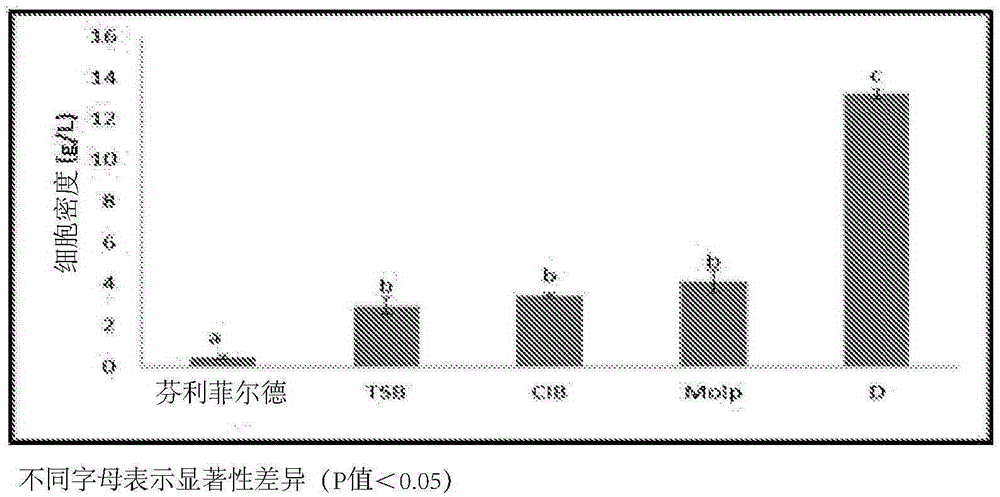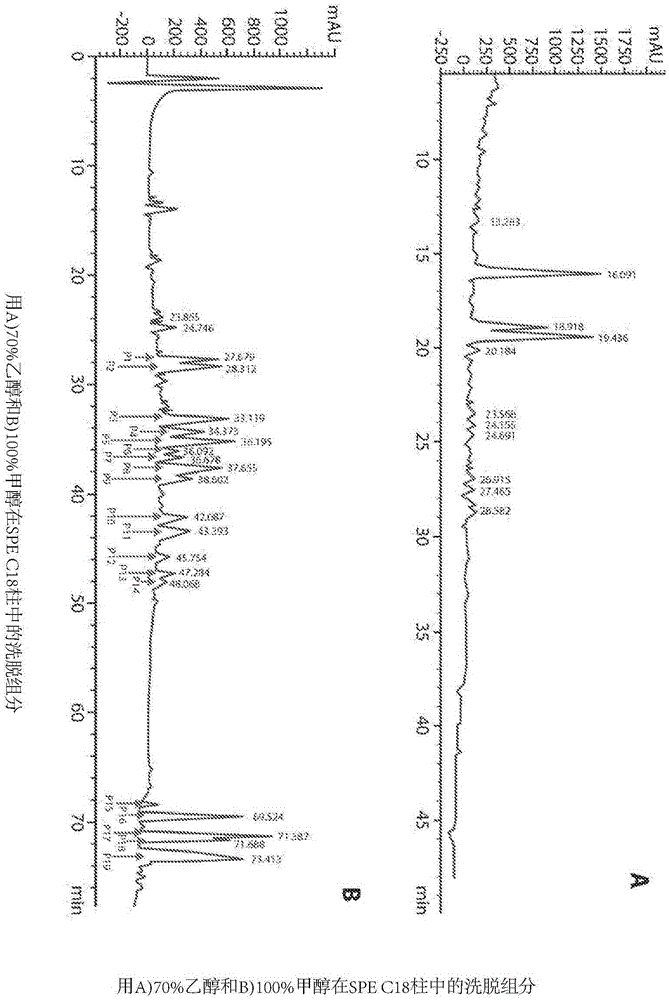Production process for biomass and fengycin metabolites of bacillus species and compositions thereof for biological pest control
A technology of Bacillus subtilis and metabolites, which is applied in the field of production of biomass and metabolites of Bacillus species and its composition for biological pest control, and can solve the problem of low biomass
- Summary
- Abstract
- Description
- Claims
- Application Information
AI Technical Summary
Problems solved by technology
Method used
Image
Examples
Embodiment 1
[0055] Embodiment 1, obtain bacillus
[0056] Strains of Bacillus were obtained from the cv. Granenano and cv. Valery cultivars of banana and the cv. Harton variety of plantain. One plantation was chosen for each cultivar and five points were established to collect a composite sample of the three plants before flowering using random probability sampling without replication. Sampling was performed on leaves numbered 2, 5, and 10 per plant, and each leaf was disassembled to select top and bottom regions.
[0057] Bacteria were isolated by using phosphate buffered saline and Tween Washing and sonication of the samples were performed. Serial dilutions were used and plated on TSA surfaces (Tryptone Soy Agar, Merck, 10%). Gram-positive cells were purified, cultured in Finley and Field's medium (150 rpm, 4 days, 30° C.), and subjected to heat shock (80° C., 20 minutes). All AEFB (Aerobic Endospore-forming Bacteria) were stored in TSB (Tryptone Soy Broth, Merck) and glycerol (2...
Embodiment 2
[0058] Embodiment 2, obtaining the biomass of Bacillus subtilis EA-CB0015 and Bacillus amyloliquefaciens EA-CB0959
[0059] Bacillus subtilis EA-CB0015 strain was replicated in 50% TSA and cultured at 30°C for 48 hours. Colonies of this strain were inoculated on medium D and cultured at 30° C. and 200 rpm for 12 hours. This culture was used as a pre-inoculum. Fermentation was carried out in a 50 mL flask with 10 mL of Medium D at 30 °C in an orbital shaker at 200 rpm. Each Erlenmeyer flask was adjusted to OD with 1 mL 600 A bacterial suspension with a value of 1 was inoculated and obtained after 12 hours of growth. The cell density of the obtained Bacillus subtilis EA-CB0015 was as high as 13.2±1.7g / L.
[0060] In order to evaluate the performance of the method in obtaining biomass of Bacillus subtilis EA-CB0015, the amount of biomass obtained using the medium of the invention (medium D) was compared with that obtained using CIB, MOLP, Finley and Field's and The amount ...
Embodiment 3
[0063] Example 3, extraction and determination of Bacillus subtilis EA-CB0015 and Bacillus amyloliquefaciens EA-CB0959 active metabolite
[0064] From the culture of Bacillus subtilis EA-CB0015 obtained according to Example 2, the extraction of its active metabolite was performed using methanol. Subsequently, solid phase extraction (SPE) was performed using methanol as an organic solvent, and the active components were purified by reverse-phase HPLC with a UV detector at a wavelength of 214 nm.
[0065] image 3The corresponding chromatograms are shown. The peak eluting between 16 and 19 minutes corresponds to iturin A ( image 3 A), peaks P1 to P14 ( image 3 B) corresponds to Fengyuan C, and peaks P15 to P19 ( image 3 B) corresponds to surfactant peptides. Some active metabolites were also identified by ESI-MS / MS (electrospray mass spectrometry), such as Figure 4 and 5 shown.
[0066] In order to evaluate the performance of this method in obtaining two groups o...
PUM
 Login to View More
Login to View More Abstract
Description
Claims
Application Information
 Login to View More
Login to View More - R&D Engineer
- R&D Manager
- IP Professional
- Industry Leading Data Capabilities
- Powerful AI technology
- Patent DNA Extraction
Browse by: Latest US Patents, China's latest patents, Technical Efficacy Thesaurus, Application Domain, Technology Topic, Popular Technical Reports.
© 2024 PatSnap. All rights reserved.Legal|Privacy policy|Modern Slavery Act Transparency Statement|Sitemap|About US| Contact US: help@patsnap.com










